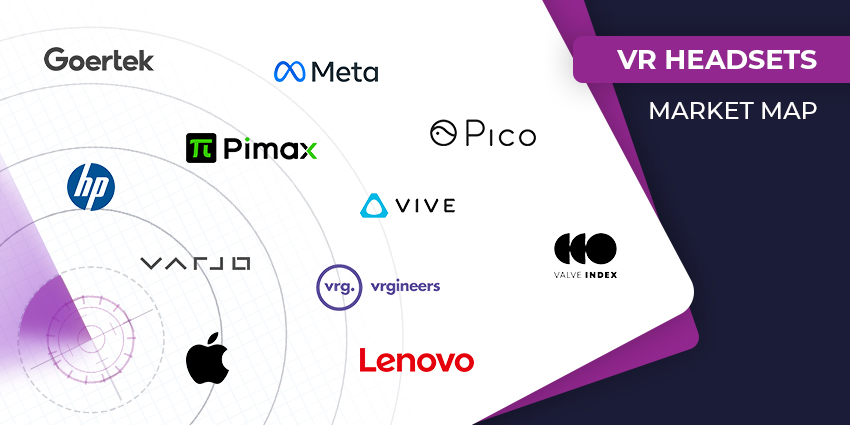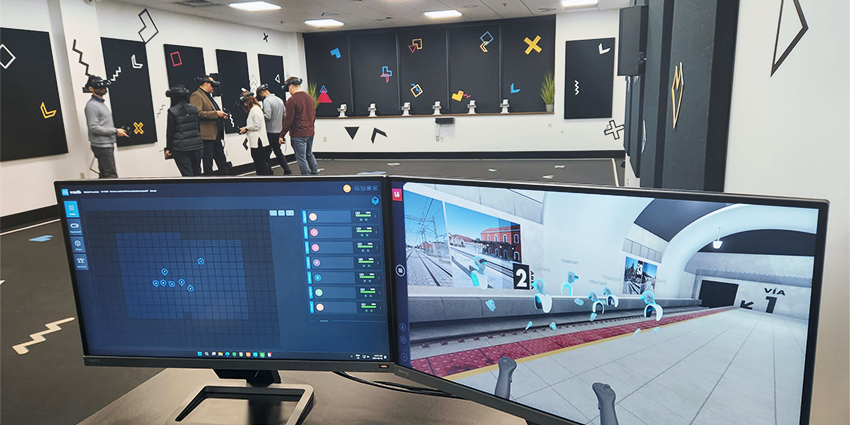Today, international electronics vendor Samsung released its Q2 earnings report, highlighting massive financial losses as the firm moves towards producing XR devices and components.
In its recorded earnings, Samsung revealed that its Q2 net profits fell by 84.5 percent from last year to $1.4 billion. Moreover, its total revenue fell by 22 percent to $47 billion.
Meanwhile, Samsung’s operating income dropped to $527 million, a decrease of 95 percent. According to the report, part of Samsung’s decreased profit is partly due to a decline in the number of smartphones the firm is shipping.
However, during the earnings call, Samsung noted how, despite its losses, the firm plans to drive forward with an XR product ready for its Galaxy ecosystem while at the same time becoming a microdisplay components provider by the end of the year.
XR will Come to the Galaxy Ecosystem
The news comes as Samsung ramps up its efforts to enter the XR device space. Samsung is experimenting with XR headsets and with multiple hints indicating that a product is on the way.
According to Daniel Araujo, VP of Mobile eXperience at Samsung, immersive content is far beyond virtual gaming in media and work. “We expected to become a mainstream technology,” Araujo remarked.
We see the XR market as a large new growth opportunity, and we’re working systematically to the groundwork for an ecosystem that includes core hardware software technology R&D and content.
Despite capital losses, the firm seems confident that its current growth plans and dedication to developing XR products will support the firm in the future, boosting Samsung’s financials.
Moreover, according to the earnings call, Samsung is “productivity investing” into creating an “innovative” immersive product with a user experience that separates the conceptual device from others on the market.
Additionally, Samsung noted that the upcoming XR device would be unique to the Galaxy ecosystem of mobile computing devices – perhaps suggesting functionalities between Samsung devices.
To support its upcoming device, Samsung launched a division to assist with securing a Galaxy XR device, Araujo noted:
We set up a dedicated organization for immersive product planning and R&D, and we’re also collaborating closely with affiliate companies and other partners. In particular, this includes a mid-to-long-term collaboration with leading partners like Google and Qualcomm.
The VP noted that while other firms are also debuting immersive devices, Samsung’s XR Galaxy-based offerings will “provide a new and differentiated form factor experience where consumers can spend more time communicating, working or enjoying their leisure time.”
Details on Samsung’s XR product as slim, Araujo explained that the firm is working on fully developing its product and accompanying ecosystem, only releasing the headset once it suitably fulfils customer expectations.
Samsung to Become Leaders in Displays Tech
In addition to Samsung entering an XR product into the Galaxy ecosystem, the firm is cementing its stance as a components manufacturer for immersive device vendors.
Already, Samsung is one of Apple’s assembly partners, providing the upcoming Vision Pro device with some of its microdisplay technology.
Alongside its Apple partnership, Samsung also acquired US microdisplay company Imagine last May. Following its 290 billion Won purchase, Samsung is currently undergoing a follow-up process which sees the firm waiting for merger approvals from various country authorities.
Samsung should start to see a return from its Imagine acquisition in October this year once acquisition deals close.
According to Ben Suh, the SVP of IR at Samsung, a “key purpose” of the Imagine acquisition is to enhance “technology preparedness” for its dive into the XR marketplace.
During the earnings call, Suh explained that Imagine, a firm which has developed microdisplays since 2001, owns various “basic and core technology patents” as well as related processing technologies that are “necessary for manufacturing ultra-high-resolution OLED on silicon or OLED” displays.
Suh also described microdisplay parts as the number 1 “key components in an XR device,” meaning that Samsung sees immense value in the market and longstanding firm Imagine should help the firm leverage this investment opportunity.
Suh added:
We organized the development team since last year to look into the development of various microdisplay technology, such as OLEDOS or LEDOS. – We think that the Imagine acquisition will help enhance our XR business competitiveness and provide microdisplay solutions, innovative solutions to a wider range of customers.
Moreover, in the future, Samsung plans to continue its research and outreach to find the “various technologies that were necessary to secure our leadership in future [XR] technology.”
Will Samsungs see a Return on Investment?
Samsung is thinking forward with its dedication of resources towards XR device development and the Imgaine acquisition. If Samsung’s plans succeed, the firm may see a return to positive profit margins while getting the rewards of an immersive investment.
However, time will tell if the plan will succeed. Samsung seems very optimistic that XR will drive the company forward. By integrating XR into the Galaxy ecosystem, Samsung opens the availability of XR to a broad spectrum of device users, potentially helping adoption rates.
Suh also added:
The XR device ecosystem has picked up activity, especially most recently. Some are saying that once the XR devices become widely penetrated, it would bring fundamental change to the way people live beyond what had happened by the smartphone.
So, despite massive losses, Samsung appears to be moving in the direction it wants. A loss in Q2 capital is expected as the firm puts funds and resources towards XR device development.
However, Samsung looks to recover from this loss, achievable if the firm correctly sells its XR product to Galaxy users and can position itself as a display provider for other leaders in the immersive marketplace.







